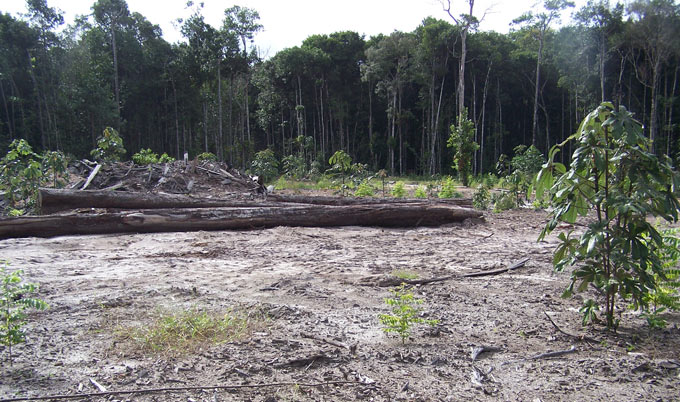Deforestation
Loss of 'overlooked' rainforest will have drastic impact
Published on: 26 July 2018
Deforestation of Guiana Shield will have impact across South America, scientists warn.
Deforestation of the ‘overlooked’ Guiana rainforests, at the northern boundary of the Amazon rainforest, will have ‘drastic impact’ on the rainfall patterns that support ecosystems and livelihoods right across South America, scientists have warned in a new report.
The Guiana Shield rainforests covers parts of northern Brazil, southern Venezuela, eastern Colombia, and all of Guyana, Suriname and French Guiana.
Despite comprising 1.3m million sq km of near continuous tropical forest, until now it has mostly been overlooked by climate researchers in favour of the Amazon Basin, and little climate data exists for the region.
Now, scientists from across the UK have quantified the likely impact that deforesting less than a third of the Guiana Shield, in areas under threat from mining, logging and agriculture, would have on the climate of South America.

Sensitive 'hotspot'
The researchers describe the scenario as ‘realistic’, given the extensive deforestation that has already occurred along the Amazon’s southern margin.
Dr Isabella Bovolo, a climate modelling expert at Durham University said: “The Guiana Shield, at the northern boundary of the Amazon, is located at the start of two atmospheric rivers that carry moisture across South America.
“The Guiana Shield is therefore a sensitive ‘hotspot’ which, when disturbed even on a small-scale, can affect hydro-climatics 1000 km to the west and 4000 km to its south.
“Our climate simulations suggest that if less than a third of the Guiana Shield is deforested, rain and runoff would more than double in lowland forests, increasing the likelihood of flooding.”
Dr Geoff Parkin from Newcastle University, said: “Forests in Venezuela and Brazil would also experience an increase in rainfall by up to 25%, severely impacting remote, indigenous communities, food supply and ecosystem stability.
“Mean annual temperatures could increase by up to 2.2 degrees Celsius in the northern savannahs, and that nearly two-thirds of the Amazon would experience longer and more severe droughts. “
Dr Ryan Pereira from the Lyell Centre at Heriot-Watt University said that “The intensification of climate variability across the continent will also affect the more populous areas in the south and east of South America, directly impacting food production in one of the largest food and crop producing areas of the world.”
Urgent, international effort needed
The findings were reported in Environmental Research Letters, and included a warning about the current threats facing the Guiana and the need for vigilance around its deforestation.
Professor Tom Wagner, also from the Lyell Centre at Heriot-Watt University said: “This study demonstrates how small-scale land-use change in sensitive hotspots can alter the flow of critical atmospheric rivers, with large consequences.
“We therefore need an urgent, international effort to better understand and sustainably manage the Amazonian biome across national boundaries to safeguard this unique global ecosystem, maintaining its role in global climate for future generations.”
The paper was published in Environmental Research Letters based on research carried out by Dr Isabella Bovolo, Durham University; Professor Tom Wahner and Dr Ryan Pereira from the Lyell Centre at Heriot-Watt University, Edinburgh; Dr Geoff Parkin, Newcastle University; David Hein-Griggs, University of Exeter and Richard Jones, Met Office Hadley Centre.
Read the paper in full and download supplementary evidence here: http://iopscience.iop.org/article/10.1088/1748-9326/aacf60#erlaacf60s1



